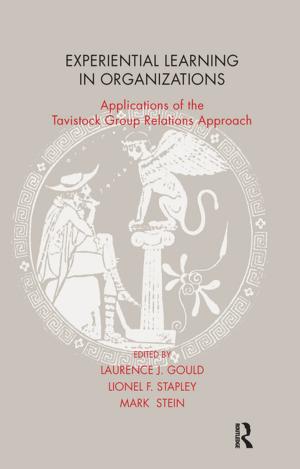Nature, Temporality and Environmental Management
Scandinavian and Australian perspectives on peoples and landscapes
Nonfiction, Science & Nature, Science, Earth Sciences, Geography| Author: | ISBN: | 9781317089551 | |
| Publisher: | Taylor and Francis | Publication: | August 5, 2016 |
| Imprint: | Routledge | Language: | English |
| Author: | |
| ISBN: | 9781317089551 |
| Publisher: | Taylor and Francis |
| Publication: | August 5, 2016 |
| Imprint: | Routledge |
| Language: | English |
How are different concepts of nature and time embedded into human practices of landscape and environmental management? And how can temporalities that entwine past, present and future help us deal with challenges on the ground? In a time of uncertainty and climate change, how much can we hold onto ideals of nature rooted in a pristine and stable past? The Scandinavian and Australian perspectives in this book throw fresh light on these questions and explore new possibilities and challenges in uncertain and changing landscapes of the future.
This book presents examples from farmers, gardens and Indigenous communities, among others, and shows that many people and communities are already actively engaging with environmental change and uncertainty. The book is structured around four themes; environmental futures, mobile natures, indigenous and colonial legacies, heritage and management. Part I includes important contributions towards contemporary environmental management debates, yet the chapters in this section also show how the legacy of older landscapes forms part of the active production of future ones. Part II examines the challenges of living with mobile natures, as it is acknowledged that environments, natures and people do not stand still. An important dimension of the heritage and contemporary politics of Australia, Sweden and Norway is the presence of indigenous peoples. As is clear in part III, the legacies of the colonial past both haunt and energise contemporary land management decisions. Finally, part IV demonstrates how the history and heritage of landscapes, including human activities in those landscapes, are entwined with contemporary environmental management.
The rich empirical content of the chapters exposes the diversity of meanings, practices, and ways of being in nature that can be derived from cultural environmental research in different disciplines. The everyday engagements between people, nature and temporalities provide important creative resources with which to meet future challenges.
How are different concepts of nature and time embedded into human practices of landscape and environmental management? And how can temporalities that entwine past, present and future help us deal with challenges on the ground? In a time of uncertainty and climate change, how much can we hold onto ideals of nature rooted in a pristine and stable past? The Scandinavian and Australian perspectives in this book throw fresh light on these questions and explore new possibilities and challenges in uncertain and changing landscapes of the future.
This book presents examples from farmers, gardens and Indigenous communities, among others, and shows that many people and communities are already actively engaging with environmental change and uncertainty. The book is structured around four themes; environmental futures, mobile natures, indigenous and colonial legacies, heritage and management. Part I includes important contributions towards contemporary environmental management debates, yet the chapters in this section also show how the legacy of older landscapes forms part of the active production of future ones. Part II examines the challenges of living with mobile natures, as it is acknowledged that environments, natures and people do not stand still. An important dimension of the heritage and contemporary politics of Australia, Sweden and Norway is the presence of indigenous peoples. As is clear in part III, the legacies of the colonial past both haunt and energise contemporary land management decisions. Finally, part IV demonstrates how the history and heritage of landscapes, including human activities in those landscapes, are entwined with contemporary environmental management.
The rich empirical content of the chapters exposes the diversity of meanings, practices, and ways of being in nature that can be derived from cultural environmental research in different disciplines. The everyday engagements between people, nature and temporalities provide important creative resources with which to meet future challenges.















